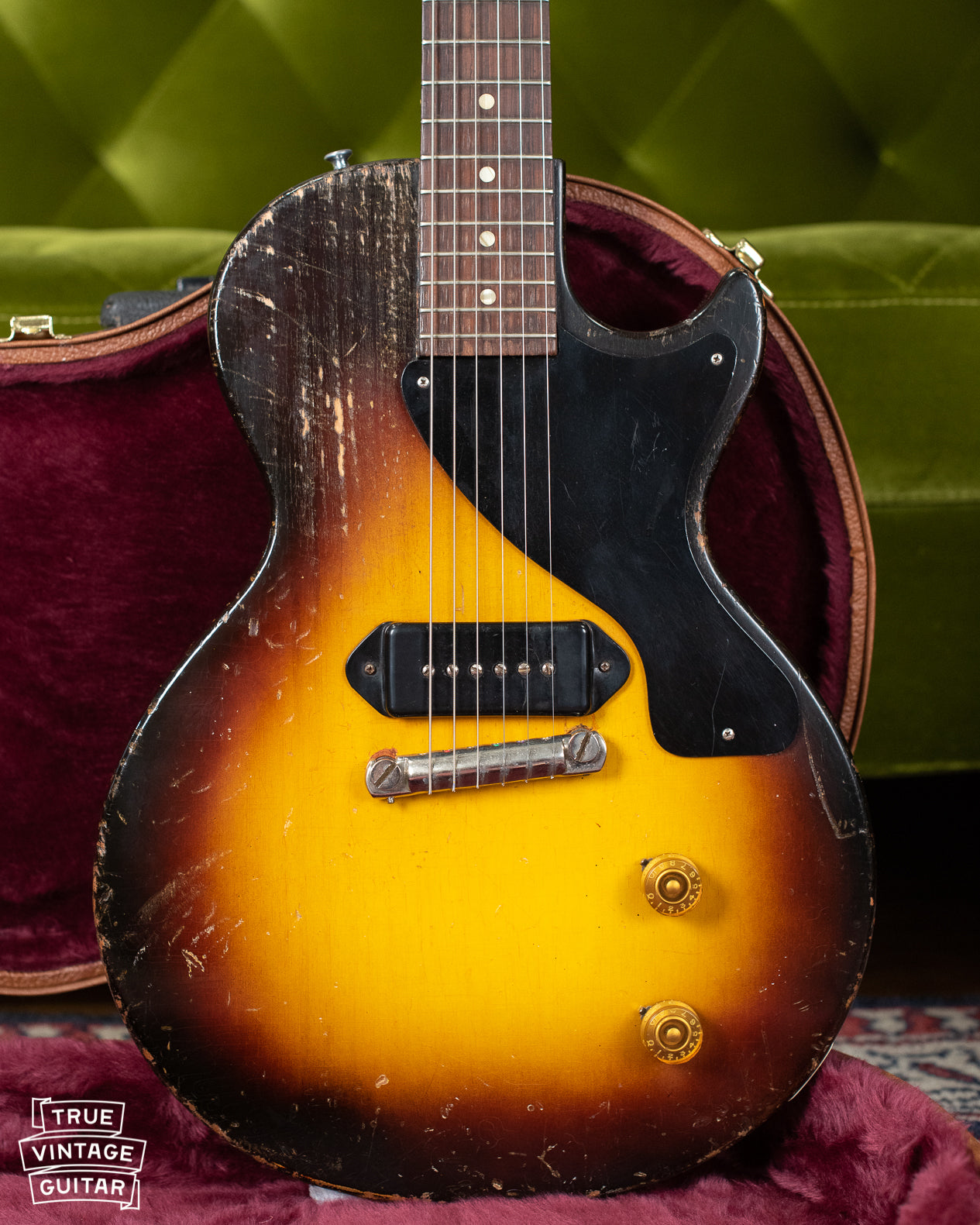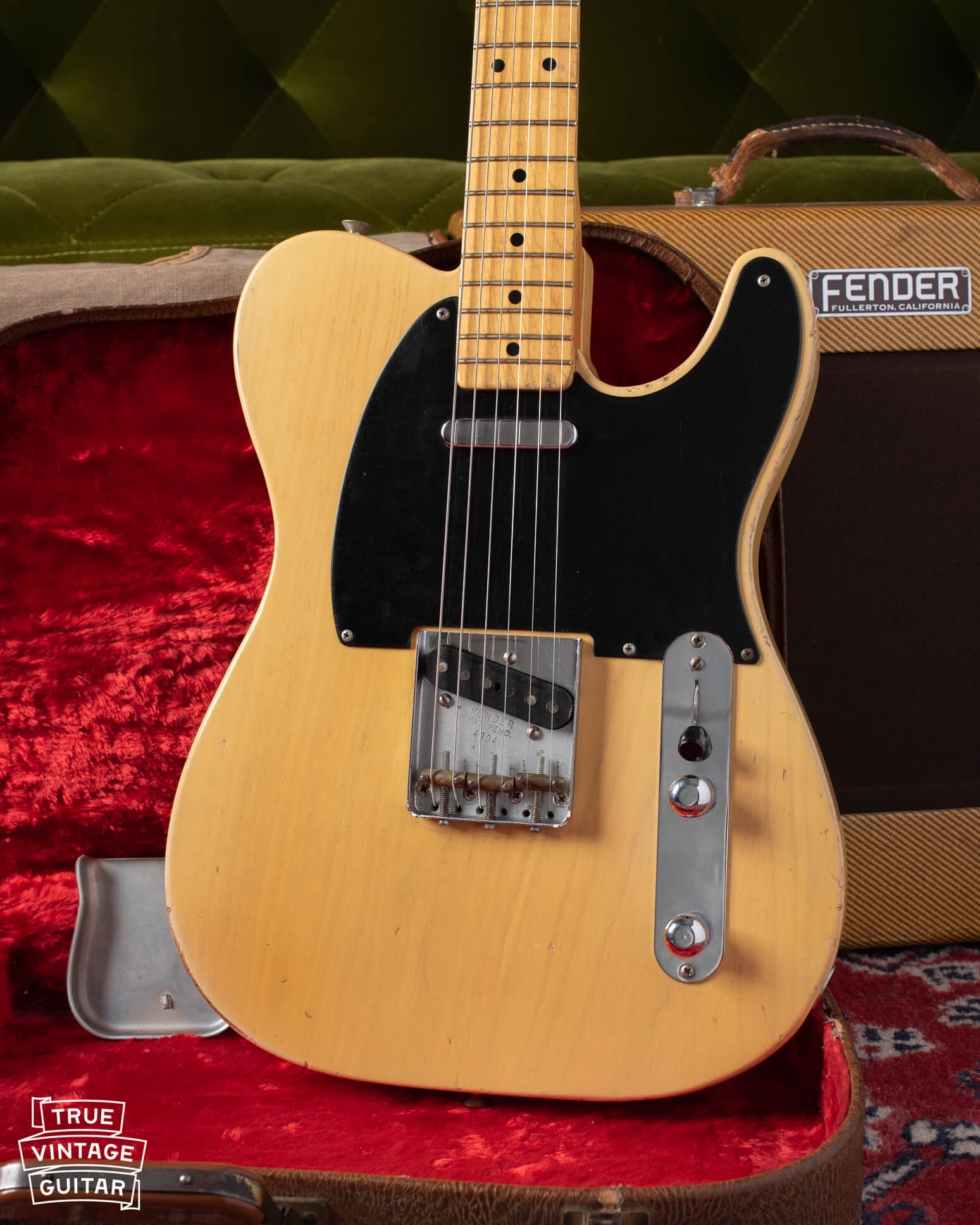This 1963 Gibson ES-335 TDC in original Cherry Red finish with Bigsby tailpiece and Custom Made plaque is one of the finest examples of the model that I've had! It's in really nice all original condition and free of fading, checking, or repairs of any kind. It's a great vintage collectible that's sure to increase in value, but as an instrument, it's truly spectacular in the way that it feels, plays, and sounds through an amplifier.
I'm always on the hunt for the nicest examples of late 1950s and early 1960s Gibson ES-335 guitars like this one. If you've inherited one and are looking for more information on how to date it then you can check out Gibson Serial Numbers or How to date a Gibson ES-335. If you're curious about how much I would value your Gibson ES-335 then you can contact me here: Sell a Gibson.
Gibson ES-335 1963
1963 is a spectacular year for the Gibson ES-335 model (and most Gibson guitars!) because of the perfect neck shape, great sounding pickups, and visually stunning aesthetic of the body shape and hardware finish. Gibson neck widths didn't change in the 1950s or up until 1965. The 1963 Gibson ES-335 have what Gibson guitar players and collectors call a "wide nut" which is referring to the width of the neck when measured at the nut. Pre-1965 Gibson ES-335 guitars will have a 1 11/16" nut width; mid 1965 Gibson ES-335 guitars may have a transitional 1 5/8" nut width (same as standard Fender neck); late 1965 and later Gibson ES-335s will have the skinny neck width measuring 1 9/16".
But the nut width of the 1963 Gibson ES-335 guitars isn't necessarily special (all of them from 1958 until 1965 have it), but the neck depth or profile measurement also increased to about 0.84" which many players consider a perfect neck profile. At its introduction in 1958, the Gibson ES-335 had a typical mid 1950s neck profile measuring about 0.90" at the first fret and about 1" at the 12th fret. It was quickly slimmed down to the typical 1959 profile which generally measures about 0.85"- 0.98". It was slimmed down even further by late 1959 to the typical 1960-1962 profile measuring about 0.80" - 0.90". The slim neck is significantly slim! It's still fun to play, but not as fun as the 1963 and 1964 examples after Gibson increased the thickness back to about the 1959 profile measuring 0.84" - 0.98".
Although subtle, the body shape at the horns of the Gibson ES-335 changed over time. My favorite era of the Gibson ES-335 has what we call Mickey Mouse ear shaped horns which are more rounded at the top. The shape changed slightly in the late 1960s to a more pointed horn which is just slightly less fun to look at. This Gibson ES-335 1963 is a nice example of the rounded mickey mouse ear shaped horns.
Most of the Gibson line's hardware finish also changed in 1965 from an attractively muted nickel to a bright and shiny chrome. The chrome hardware of the late 1960s doesn't age well, in fact, it doesn't usually age at all. It can leave the guitar looking a bit mismatched if the finish on the body has worn and yellowed over time. The nickel finished hardware of the early 1960s ages wonderfully along with the guitar. The nickel finished hardware is much more attractive to this Gibson guitar collector.

The Custom Made Plaque on Bigsby Gibson ES-335s
The standard tailpiece on the Gibson ES-335 from 1958 until 1965 is a stop bar mounted to studs anchored in the top just below the tune-o-matic bridge. Many players in the late 1950s and 1960s wanted the smooth Bigbsy B7 tremolo tailpiece instead which was available from Gibson as an upgrade or as an aftermarket modification. As a part of Gibson's manufacturing process, Gibson pre-drilled and installed the stop bar tailpiece holes and studs on nearly all of the ES-335 guitars without regard to their future as a fixed tailpiece or tremolo. The ES-335s ordered with a Bigsby option typically received a three layer (black white black) engraved plastic plate which covered the holes and read "CUSTOM MADE".
It seems that the popularity of the plate caught on because some guitars have this plate but not the pre-drilled stop tail studs! It's possible that the plate was installed aftermarket on these guitars (usually late 1960s). This Gibson ES-335 1963 has studs underneath the Custom Made plate and a ground wire routed under the treble side mounting screw of the Bigsby. We can be reasonably sure that this is a factory installed Bigsby and Custom Made plaque because of the location of the ground wire.
Sell a Gibson
As a Gibson guitar collector, I'm always looking for nice examples of late 1950s and early 1960s Gibson ES-335 guitars. I travel world wide to buy the Gibson guitars I've always dreamed of. If you're curious about the value of you Gibson ES-335 then you can contact me here: Sell a Gibson. Or if you're curious about what year your Gibson was made then check out How to date a Gibson ES-335 or Les Paul Serial Number Lookup.




